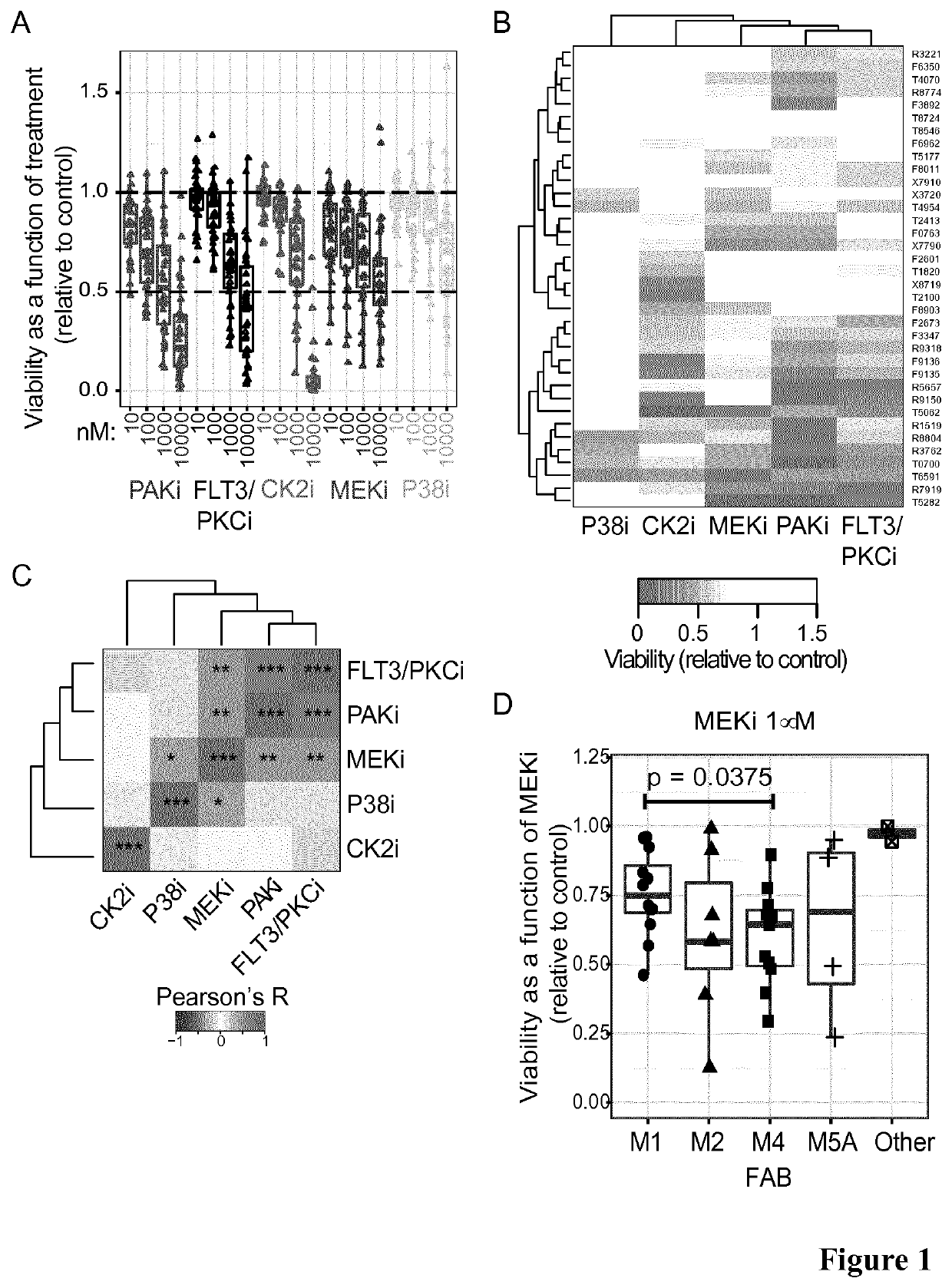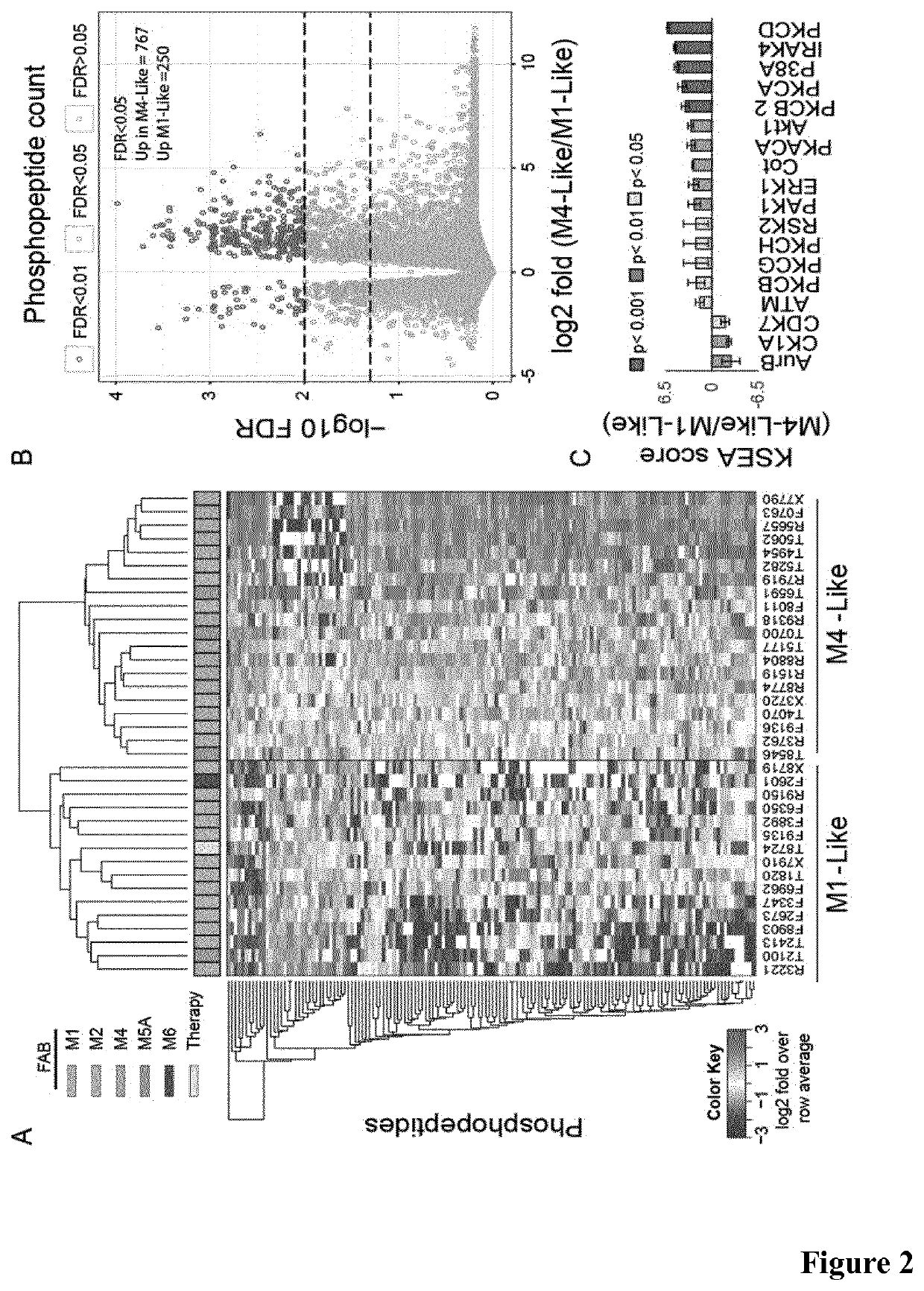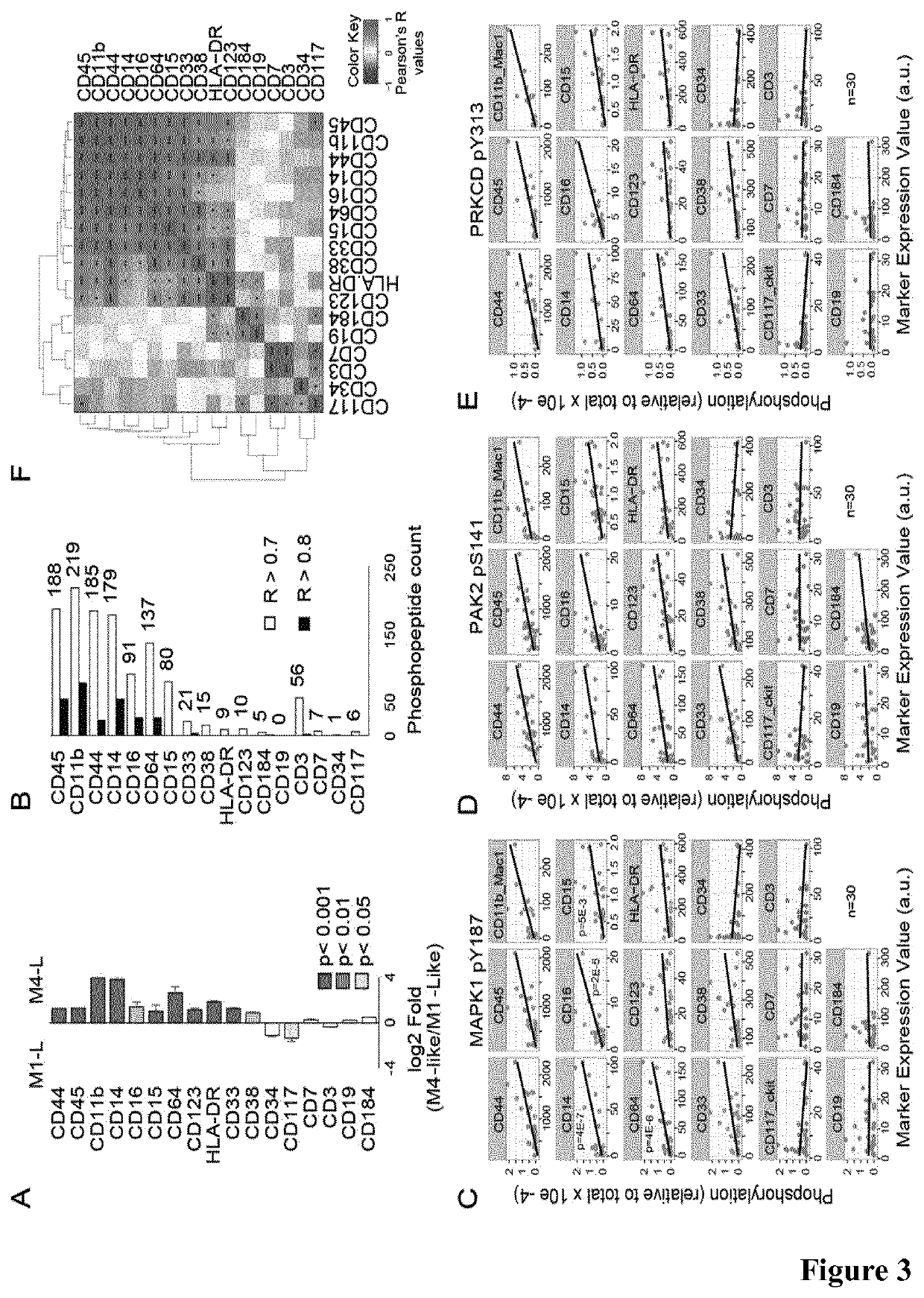Stratification Of Acute Myeloid Leukaemia Patients For Sensitivity To Kinase Pathway Inhibitor Therapy
a technology of kinase pathway inhibitor and acute myeloid leukaemia, which is applied in the direction of material analysis, post-translational modification detection, instruments, etc., can solve the problems rapid death of acute myeloid leukaemia, and premature arrest state of development, so as to achieve accurate identification of sensitive cells, effective biomarkers, and high sensitivity to kinase pathway inhibitors
- Summary
- Abstract
- Description
- Claims
- Application Information
AI Technical Summary
Benefits of technology
Problems solved by technology
Method used
Image
Examples
example 1
with a More Advanced Differentiation Status are More Responsive to Kinase Inhibitor Treatment than Less Differentiated Cells
[0263]We found that M4 cells responded significantly better than M1 cells to MEKi (FIG. 1D), suggesting that AML cases of the M4 subtype were more sensitive to MEKi than those categorized as M1. This indicates that the differentiation status of the leukaemia cells may be a marker for sensitivity to kinase inhibitor therapy.
example 2
ation of a Phosphoproteomic Signature that is Characteristic of Differentiated Cells
[0264]We investigated differences in kinase signaling between these AML subtypes. Using a mass spectrometry method as described below we identified and quantified 9,534 phosphopeptide ions in these experiments. Of these, we selected the 150 phosphorylation sites showing the most significant differences (based on Student's t-test p-values) across groups as a phosphoproteomics signature that discriminated M4 from M1 AML subtypes (FIG. 9A). Since M4 cells are more differentiated than M1, we hypothesized that this signature may be linked to the differentiation stage of the analyzed blasts. In a hierarchical clustering analysis, this phosphoproteomics signature subdivided our cohort of 36 patients into two defined groups (FIG. 2A). We termed “M1-Like” the group that included 10 of the 12 cases of the M1 subtype, and “M4-Like” the group that comprised all M4 cases (FIGS. 2A and 2B). The M1-Like and M4-Like...
example 3
ation of a Cell Surface Marker Protein Signature that is Characteristic of Differentiated Cells and Correlates with the Phosphoproteomic Signature
[0266]To measure differentiation status with precision, we used mass cytometry to immunophenotype 30 cases of the 36 AML cohort (for which we had available material) by measuring the surface expression of 17 differentiation markers (FIG. 10B). We found that M4-Like cases had a greater expression of myelomonocytic differentiation markers than M1-Like cases (FIG. 3A and FIG. 10C). We next investigated if the presence of specific differentiation markers was linked to the activation of kinase signaling pathways. We found that the surface expression of CD45, CD11b, CD44, CD14, CD16, CD64 and CD15 was statistically associated (r>0.7, p+ cells were characterized by the surface expression of a panel of cell surface markers consisting of CD33, CD123, HLA-DR, CD44, CD38, CD15, CD45, CD16, CD64, CD11b, and CD14.
PUM
| Property | Measurement | Unit |
|---|---|---|
| pH | aaaaa | aaaaa |
| volumes | aaaaa | aaaaa |
| volumes | aaaaa | aaaaa |
Abstract
Description
Claims
Application Information
 Login to View More
Login to View More - R&D
- Intellectual Property
- Life Sciences
- Materials
- Tech Scout
- Unparalleled Data Quality
- Higher Quality Content
- 60% Fewer Hallucinations
Browse by: Latest US Patents, China's latest patents, Technical Efficacy Thesaurus, Application Domain, Technology Topic, Popular Technical Reports.
© 2025 PatSnap. All rights reserved.Legal|Privacy policy|Modern Slavery Act Transparency Statement|Sitemap|About US| Contact US: help@patsnap.com



